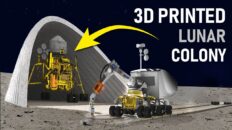Two popular types of foundations are pier and beam and slab foundations. In this article, we’re going to look at how they are made, their upfront costs, long term costs, protection from the elements, where they should be used and whether one is better than the other.
Introduction
Foundations are a critical part of a building’s structure. They serve numerous purposes.
- They bear the load of the building, its inhabitants, contents, snow and rain.
- They distribute these loads over a large area to prevent excessive settlement.
- They provide protection against natural forces like earthquakes, tornadoes and floods.
- They protect buildings from freeze thaw cycles and the expansion and contraction of soil.
- They also provide a level surface to start constructing a building.
Pier and Beam Foundation
Pier and beam foundations, or post and beam foundations, were commonly used before 1960 and are found in older homes. The process involves digging holes spaced 5 to 10 feet apart until they reach bedrock, and large cardboard tubes are sunk into the soil. Circular rebar cages are added to the voids, and concrete is poured to create piers. Beams extend from one pier to another, supporting the home’s joists and flooring. The crawl space beneath provides a location for plumbing and electrical components.
There are several variations of pier and beam foundations. The piers can be made of precast concrete, brick, stone or cedar wood which is resistant to rot and decay. The crawl space or the area under the building can be vented or unvented.
Slab on Grade Foundations
Slab on grade or monolithic slab foundations are newer construction methods. The concrete slab is directly laid on the ground after leveling the surface and creating a perimeter form. Gravel, plastic sheathing, and engineered steel rebar reinforce the concrete foundation. A post-tensioned slab is a newer version, with steel cables providing additional tensile strength. Another type is the floating slab foundation, which allows the horizontal slab to move above the frost line independently. This is ideal for garages, workshops, sheds, and additional dwelling units (ADUs).
Post Tensioned Slab Foundations
A newer version of slab on grade foundation is a post tensioned slab. Steel cables are laid out in a grid inside the formwork. After the slab has been cast, the cables are tightened which gives the foundation tensile strength. A type of monolithic slab is a floating slab foundation. In this method, the horizontal slab is not connected to the vertical foundation. It simply sits on the ground and can move above the frost line as a monolithic unit.
Cost Considerations:
Slab foundations are more popular nowadays due to their lower upfront cost and easier construction process compared to pier and beam foundations. The cost of pier and beam foundations can vary significantly based on soil depth, making it less predictable. However, the lower upfront cost of slabs can lead to higher long-term costs, particularly when it comes to foundation repair. Pier and beam foundations are easier and cheaper to repair as individual piers and beams allow for the isolation of foundation problems.
Protection from the Elements
Pier and beam foundations can be insulated with fiberglass or spray foam, making them more energy-efficient and comfortable. However, vented pier and beam foundations may experience cold floors and dampness in the crawl space during winter. Slab foundations lack this issue but require a vapor barrier to prevent moisture seepage. Both foundation types are susceptible to pest and rodent intrusion, but slabs are more resistant to large pests.
Advantages and Disadvantages
Pier and beam foundations offer flexibility, allowing for easy addition of levels or moving the entire home to a different location. Slab foundations are best suited for level sites, regions with moisture, and areas experiencing freezing weather in winter. Each foundation type has its unique advantages and disadvantages, making the choice dependent on factors such as site conditions, budget, soil type, and climate.
Conclusion
There is no definitive answer to whether pier and beam or slab foundations are better, as both have their merits and drawbacks. In Texas, where soil conditions can vary drastically, pier and beam foundations are commonly used, but they might be expensive in certain areas. Slab foundations built on stable soil can last for decades without issues. Ultimately, homeowners should consider their specific requirements and consult with experts to make an informed decision for their home’s foundation.
https://www.youtube.com/watch?v=fVwUl4cm8fQ RR Buildings
https://www.youtube.com/watch?v=tCC1wKX58mM Sakcrete
https://www.youtube.com/watch?v=c6_2tbCIq2M Lowe’s
https://www.youtube.com/watch?v=2OYoDwNAA-Y Odell Complete Concrete
https://www.youtube.com/watch?v=1MrQD2NamUE SNP post tension
https://www.youtube.com/watch?v=UKNNAkfP_Xw San Francisco Chronicle





